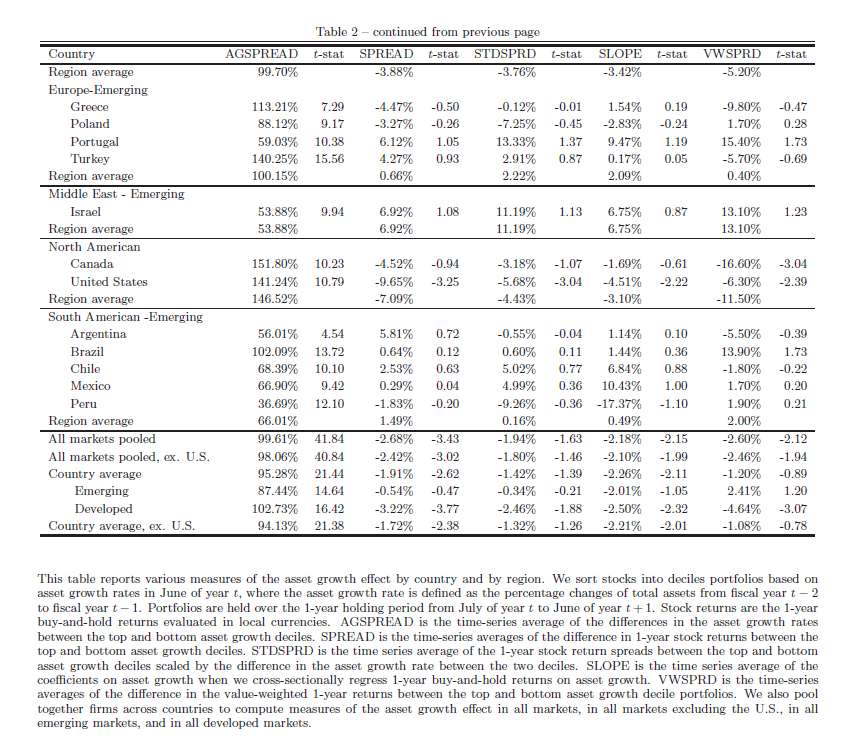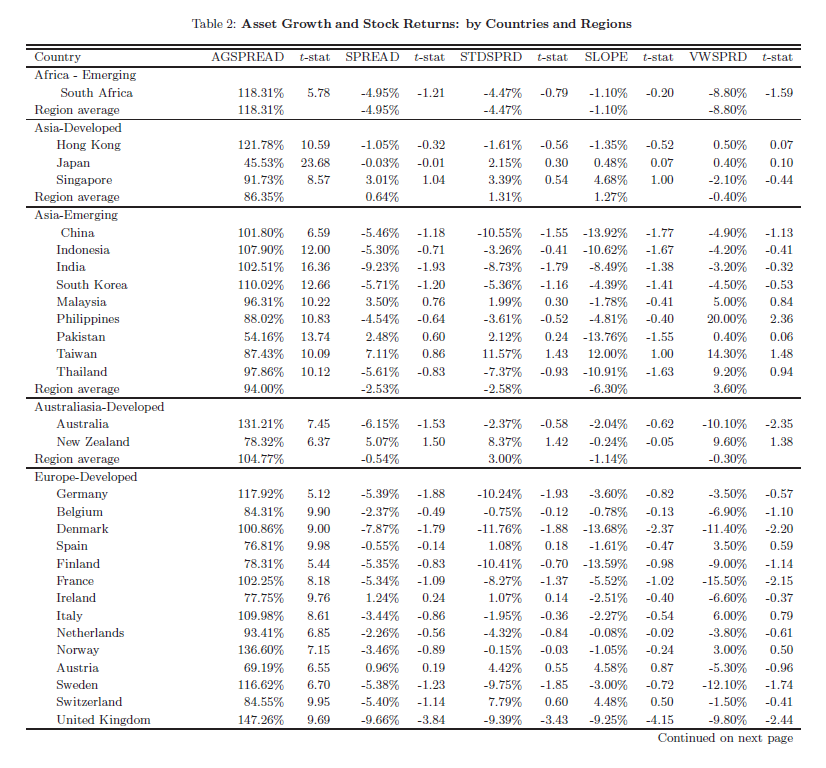A new working paper investigates the asset growth anomaly across multiple countries and finds that the effect is fairly robust.
Here is the link to the document:
http://papers.ssrn.com/sol3/papers.cfm?abstract_id=1787237&
Here is a link to our original post on the anomaly:
https://alphaarchitect.com/2011/03/the-asset-growth-effect-in-stock-returns/
Here is a link to our data site that provides data to trade the global strategy:
https://alphaarchitect.com/users/sign_in
Here are the stats for the asset growth anomaly by country, and in aggregate across the world:

The results are hypothetical results and are NOT an indicator of future results and do NOT represent returns that any investor actually attained. Indexes are unmanaged, do not reflect management or trading fees, and one cannot invest directly in an index. Additional information regarding the construction of these results is available upon request.

The results are hypothetical results and are NOT an indicator of future results and do NOT represent returns that any investor actually attained. Indexes are unmanaged, do not reflect management or trading fees, and one cannot invest directly in an index. Additional information regarding the construction of these results is available upon request.
About the Author: Wesley Gray, PhD
—
Important Disclosures
For informational and educational purposes only and should not be construed as specific investment, accounting, legal, or tax advice. Certain information is deemed to be reliable, but its accuracy and completeness cannot be guaranteed. Third party information may become outdated or otherwise superseded without notice. Neither the Securities and Exchange Commission (SEC) nor any other federal or state agency has approved, determined the accuracy, or confirmed the adequacy of this article.
The views and opinions expressed herein are those of the author and do not necessarily reflect the views of Alpha Architect, its affiliates or its employees. Our full disclosures are available here. Definitions of common statistics used in our analysis are available here (towards the bottom).
Join thousands of other readers and subscribe to our blog.

